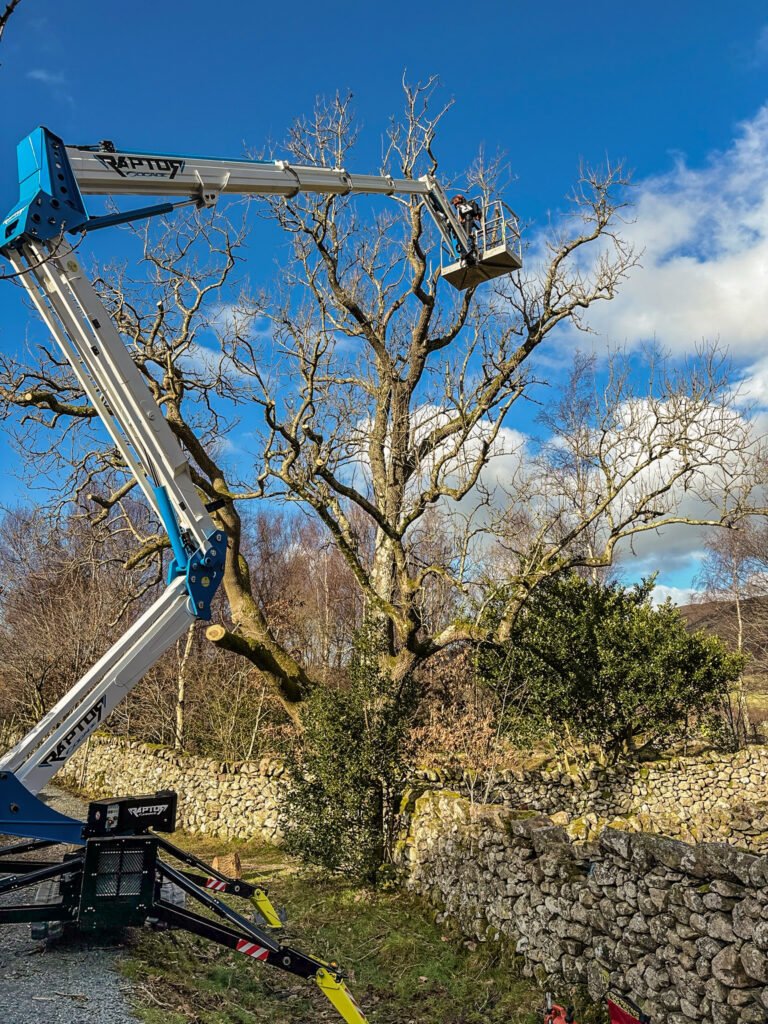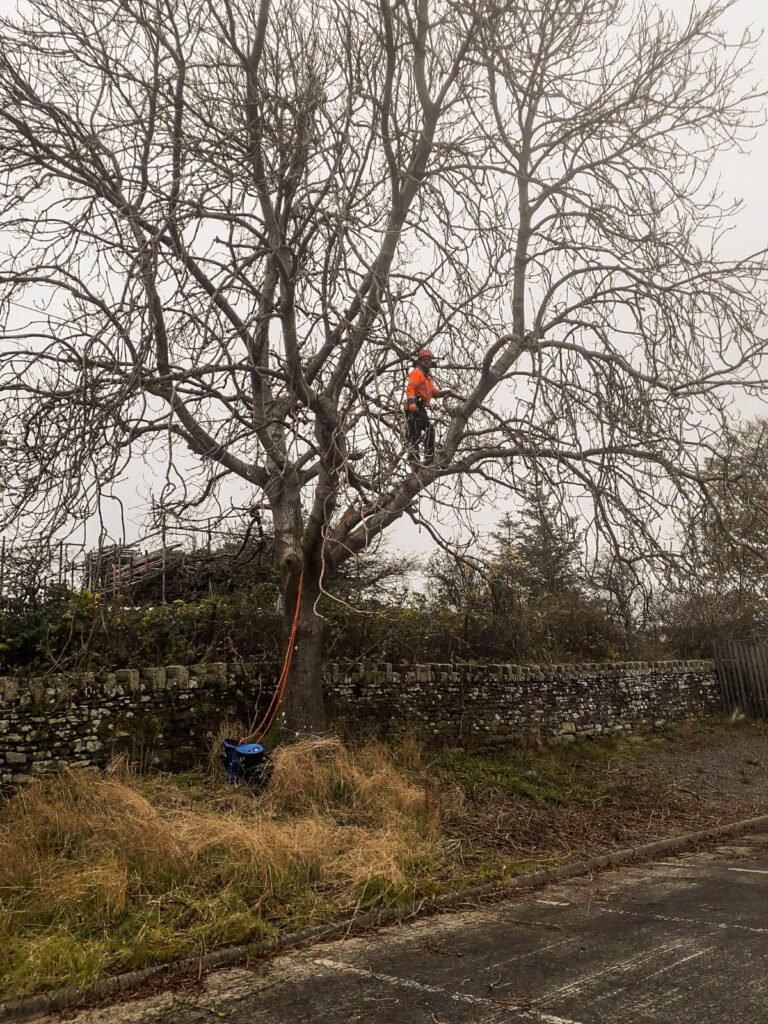Pruning Ash with particular reference to Ash dieback
Ash trees, Fraxinus excelsior, are a defining feature of many landscapes, valued for their light canopies, resilience, and ecological importance. With the increasing environmental pressures and the spread of ash dieback, careful, well-informed pruning has become essential. This guide offers practical advice for pruning ash trees—including Common Ash, Manna Ash, and Claret Ash—with a focus on safety, preservation, and environmental responsibility.
Why Prune Ash Trees?
Pruning ash trees benefits both people and nature:
1. Safety
Ash species are known for becoming brittle with age. Removing dead, weak, or overextended branches reduces the risk of sudden limb failure—especially near buildings, paths, and roads.
2. Tree Health
Selective pruning helps remove diseased or crossing branches, supports healthy structure, and reduces the spread of pathogens.
3. Canopy Structure
Good pruning encourages a balanced, stable crown that can better withstand wind and storm damage.
4. Environmental Stewardship
Ash trees support a wide range of wildlife. Sensible pruning preserves habitats while keeping the tree safe and sustainable.
Ash Dieback and Its Impact
Ash dieback remains the most significant threat to ash species across the UK and Europe. It causes:
- Progressive crown dieback
- Stem and branch lesions
- Severe brittle weakness
Pruning Decisions with Dieback Present
- Early-stage infection: light thinning or removal of deadwood may relieve stress.
- Moderate infection: structural pruning or crown reduction may improve safety.
- Advanced infection: high risk due to brittle wood—professional assessment is essential, and removal may be necessary.


When to Prune Ash Trees
- The ideal time is late winter to early spring, when the tree is dormant.
- Avoid pruning in late summer and autumn, when ash dieback spores are most active.
Pruning Different Ash Species
1. Common Ash (Fraxinus excelsior)
The UK’s native ash responds well to light thinning and structural correction. Avoid over-pruning, as this species relies on its naturally open crown. Where dieback is present, focus on safety and structural management rather than aesthetics.
2. Manna Ash (Fraxinus ornus)
Manna Ash is smaller, more ornamental, and generally less susceptible to ash dieback, though not entirely immune.
Pruning Manna Ash
- Light, formative pruning is best—remove crossing stems and maintain a single strong leader.
- Avoid heavy reductions; the species prefers a natural rounded crown.
- Remove suckers from the base if a clean trunk is desired.
- Manna Ash can bleed sap if pruned too late in spring, so late winter pruning is ideal.
Because it maintains stronger wood than Common Ash, Manna Ash is typically more predictable when cutting—but still requires professional care when working at height or near structures.
3. Claret Ash (Fraxinus angustifolia var. oxycarpa)
Claret Ash is known for its stunning burgundy autumn colour but has a reputation for branch brittleness, especially as it matures.
Pruning Claret Ash
- Focus on early structural training to avoid weak branch unions later.
- Reduce narrow, upright forks while the tree is young.
- Avoid hard pruning—Claret Ash is more prone to stress and dieback from over-thinning.
- Regularly remove deadwood, as this variety can shed small limbs without warning.
Because Claret Ash is somewhat sensitive to pruning wounds, make clean cuts and preserve the branch collar to support strong healing.
Practical Pruning Tips for All Ash Species
Start with safety
Always remove dead, diseased, or storm-damaged wood first.
Follow the 3-cut method
This prevents tearing and protects the bark when removing larger limbs.
Avoid flush cuts
Retain the branch collar to help natural wound closure.
Don’t remove too much
Over-pruning increases stress and vulnerability to disease.
Prioritise preservation
Where possible, support the tree rather than drastically reducing it. Environmentally, even declining ash trees can remain valuable habitat as long as they pose no danger.
Environmental Considerations
- Avoid major pruning during nesting season (March–August).
- Retain stable, non-hazardous deadwood in natural areas, as it supports insects and fungi.
- Trees showing natural tolerance to ash dieback should be preserved wherever safely possible—they may be crucial for future resilience.

When to Call a Professional
Ash trees—especially those with dieback—are unpredictable and often unsafe to climb without proper training. You should consult a certified arborist if:
- The tree shows signs of moderate or advanced dieback
- Branches extend over structures or public spaces
- The tree has structural defects or significant decay
- You’re unsure how much to prune or which species you’re dealing with
Final Thoughts
Pruning ash trees is a balance between safety, preservation, and environmental care. Whether you’re managing Common Ash, the ornamental Manna Ash, or the colourful Claret Ash, thoughtful pruning helps prolong their life, maintain habitat, and reduce risk—especially in the era of ash dieback.
Needing some help pruning your trees? Call Arborscape your local professional.
